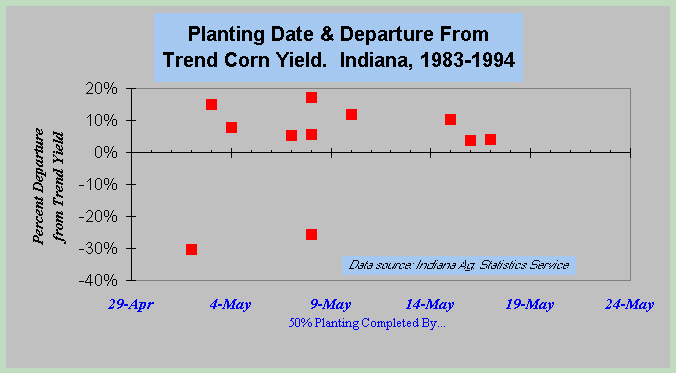
The start to the 1995 corn planting season ranks among the 4 slowest since 1983. What, if anything, does delayed planting statewide mean in terms of this year's corn crop? The answer depends greatly on what happens during the rest of the growing season.
The most commonly quoted rule of thumb regarding planting date effects is that yield potential drops 1 to 2 bushels per acre per day of delayed planting. While such estimates can add up to impressive yield losses, it is important to recognize that these estimates were usually generated from research comparing planting dates with equally good planting conditions.
Corn planted in mid- to late May under favorable conditions doesn't necessarily yield less than corn planted into cold, wet soils in early May. Let's look at recent state average corn yields in Indiana and compare them with each year's planting progress. During the past 12 years (1983-94), the date by which 50% of the corn acreage was planted varied from about May 2nd to May 21st and departures from trend yield varied from +17% to -34%. (see accompanying graph)
However, there was not a direct relationship between planting date and departure from trend yield. For example, departures from trend yield for the three years when 50% of the acreage was planted by May 8 were +17%, +6%, and -26%. Departures from trend yield for the four years with the latest planting dates (May 15, 16, 17, and 21) were +10%, +4%, +4%, and -34%.
The bottom line is that, on a statewide basis, planting date plays a minor role in determining corn yields. Weather, disease, and insects throughout the rest of the growing season are much bigger players. By the way, what was the departure from trend yield for the year when 50% of the crop was planted by May 2nd? The year was 1988 and the departure from trend was -30%!